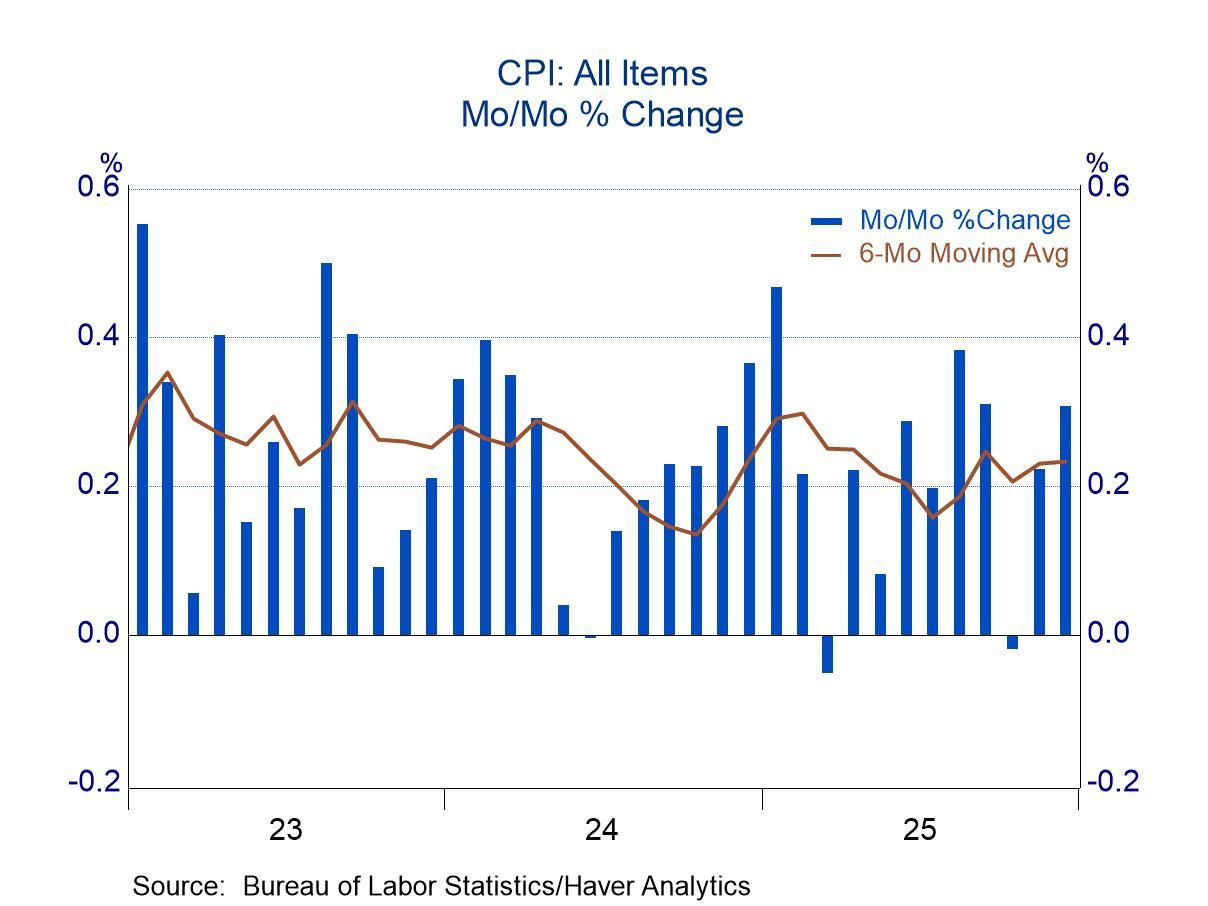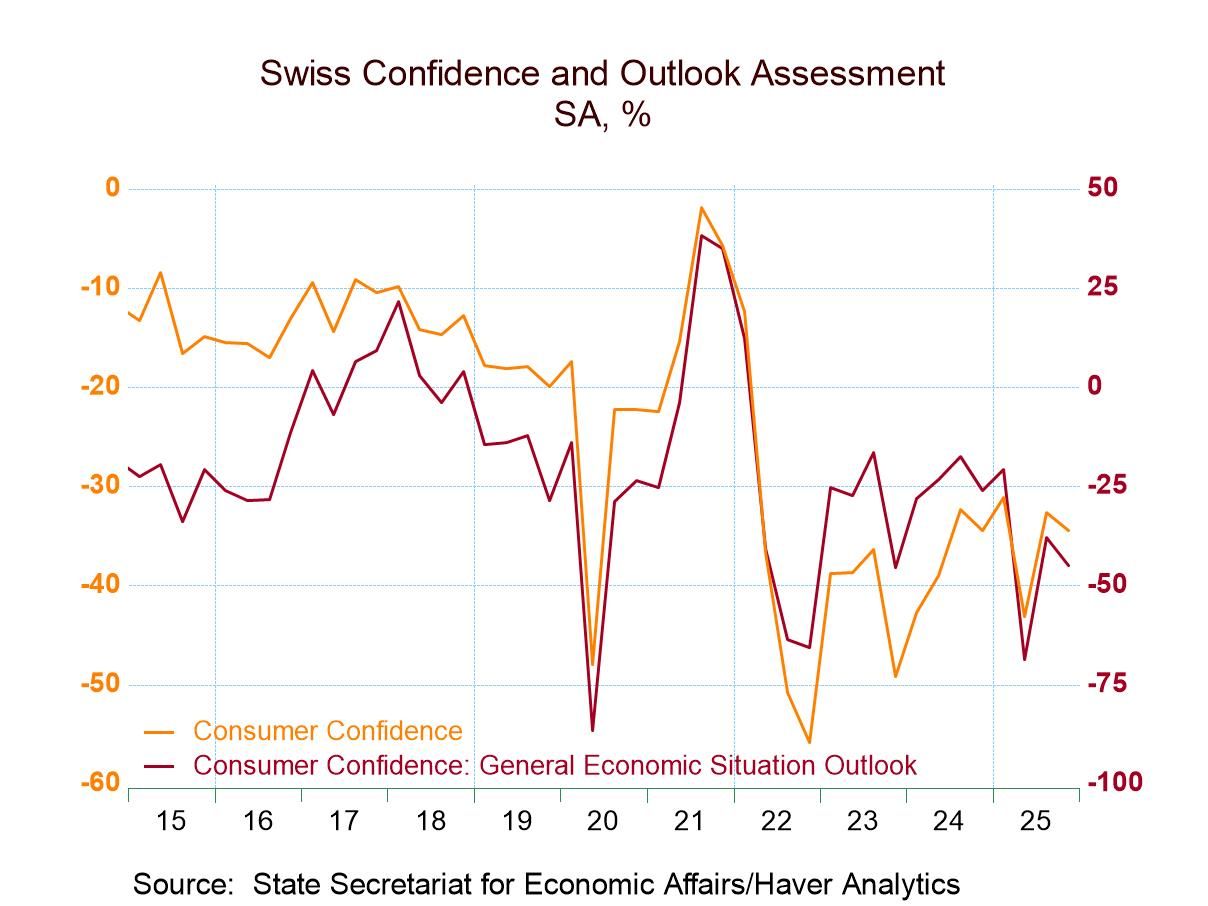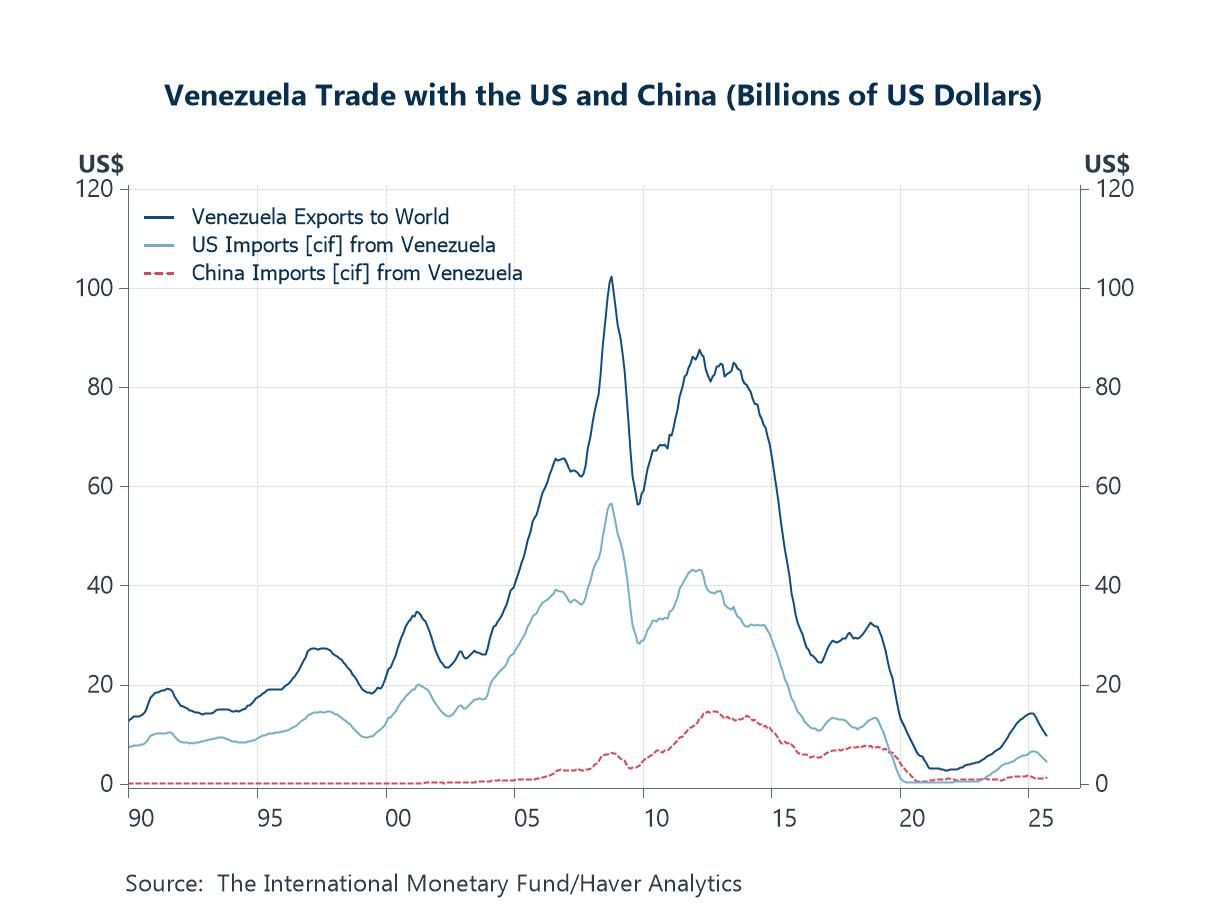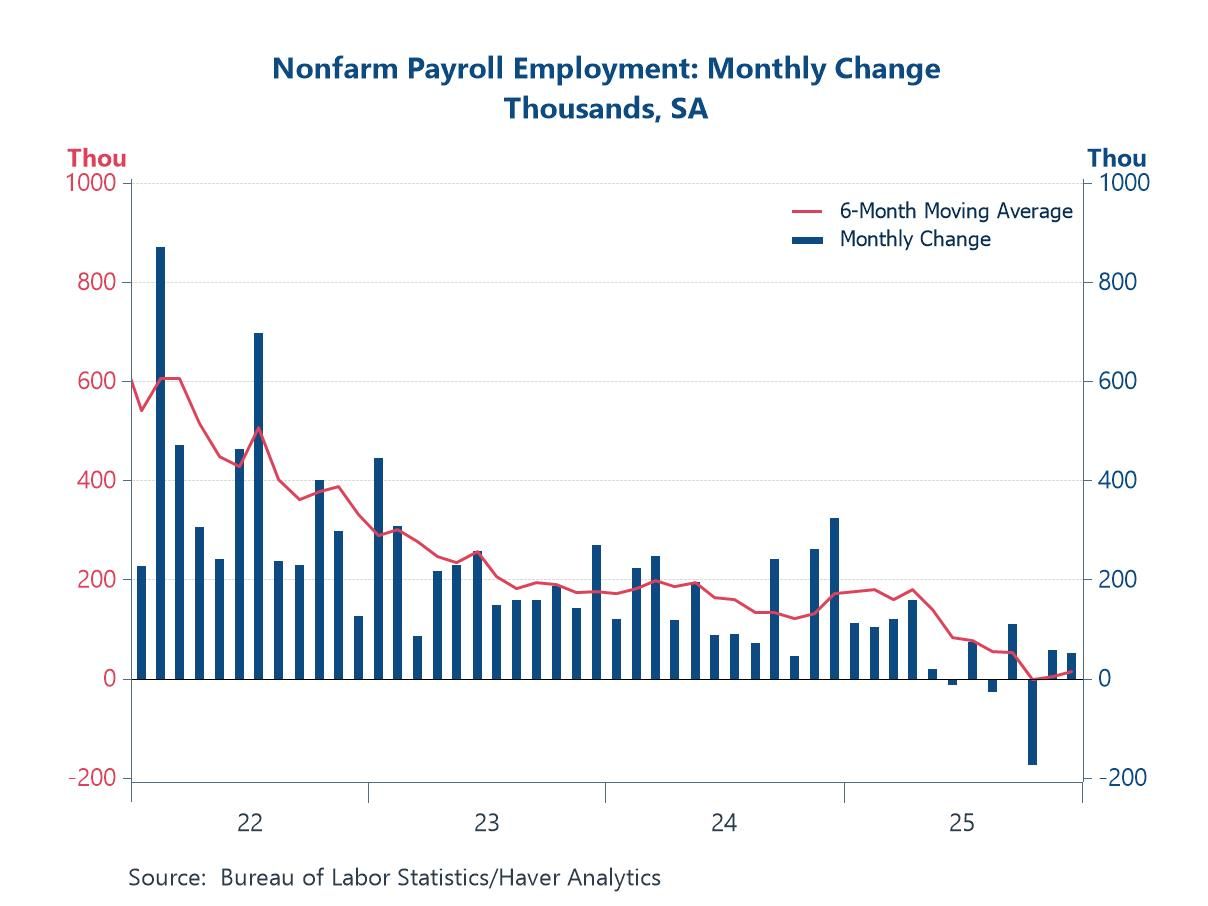U.S. Goods Trade Deficit Widens to New Record in November
by:Sandy Batten
|in:Economy in Brief
Summary
- Widely spread decline in exports.
- Widely spread increase in imports, led by industrial supplies.


The advance estimate of the U.S. international trade deficit in goods widened to $97.78 billion in November, a new monthly record, from $83.20 billion in October. The Action Economics Forecast Survey expected a much smaller widening of the deficit to $86.3 billion. Exports fell 2.1% m/m (+22.2% y/y) in November following their 11.0% m/m jump in October. Imports increased 4.7% m/m (+19.1% y/y), making up for meager 0.8% and 0.9% monthly gains in October and September, respectively. The sharp widening of the deficit in November essentially offset the marked narrowing of the deficit in October. So, for the first two months of the fourth quarter, the goods trade deficit is on course to be a neutral factor in fourth quarter's GDP.
By end-use category, the decline in exports in November was widely spread with only exports of foods, feeds and beverages posting a monthly increase (+4.3% m/m). Exports of industrial supplies fell 2.3% m/m; capital goods exports were down 3.0% m/m; exports of automotive vehicles and parts declined 2.3% m/m; nonauto consumer goods exports dropped 2.1% m/m; and other exports slumped 7.2% m/m. Each of these categories had posted meaningful monthly increases in October.
The November increase in imports was also widely spread across end-use categories and was led by a 10.0% m/m jump in imports of industrial supplies and materials (which include petroleum products) following a 0.9% m/m decline in October. Imports of foods, feeds and beverages rose 3.4% m/m (+1.9% m/m in October); capital goods exports edged up 0.3% m/m after a 0.7% m/m drop in October; imports of automotive vehicles and parts increased 4.5% m/m on top of a 5.7% monthly gain in October; nonauto consumer goods imports rose 4.5% m/m following a 1.5% increase in October; and other imports jumped up 6.5% m/m versus 1.5% m/m in October.
The advance international trade data can be found in Haver's USECON database. The expectation figure is from the Action Economics Forecast Survey, which is in AS1REPNA.


Sandy Batten
AuthorMore in Author Profile »Sandy Batten has more than 30 years of experience analyzing industrial economies and financial markets and a wide range of experience across the financial services sector, government, and academia. Before joining Haver Analytics, Sandy was a Vice President and Senior Economist at Citibank; Senior Credit Market Analyst at CDC Investment Management, Managing Director at Bear Stearns, and Executive Director at JPMorgan. In 2008, Sandy was named the most accurate US forecaster by the National Association for Business Economics. He is a member of the New York Forecasters Club, NABE, and the American Economic Association. Prior to his time in the financial services sector, Sandy was a Research Officer at the Federal Reserve Bank of St. Louis, Senior Staff Economist on the President’s Council of Economic Advisors, Deputy Assistant Secretary for Economic Policy at the US Treasury, and Economist at the International Monetary Fund. Sandy has taught economics at St. Louis University, Denison University, and Muskingun College. He has published numerous peer-reviewed articles in a wide range of academic publications. He has a B.A. in economics from the University of Richmond and a M.A. and Ph.D. in economics from The Ohio State University.






 Asia
Asia